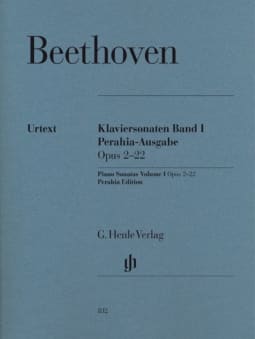Description
For decades, the Henle Urtext edition of Beethoven's piano sonatas has been the standard reference among pianists worldwide. Edited by Munich musicologist Bertha Antonia Wallner with support from the Beethoven Archive in Bonn, this landmark publication debuted in the early 1950s and was quickly recognized as a new benchmark. Rigorous field testing over the ensuing decades led to ongoing improvements and refinements, cementing the Henle Urtext's status as the definitive source for these works.
The printed fingerings provided by pianist and pedagogue Conrad Hansen are regarded as insightful suggestions for navigating technical and musical challenges - "as few fingerings as possible, albeit instructive ones," as Hansen himself noted.
In addition to the two-volume collected edition with Hansen's fingerings, Henle offers the Beethoven sonatas in alternative formats: an Urtext edition without fingerings, a pocket score series, and a digital version in the "Henle Library" app featuring fingerings by renowned pianists like Eugen d'Albert, Claudio Arrau, and Artur Schnabel.
Beethoven's 32 piano sonatas, regarded by Hans von Bülow as the "New Testament of music," represent a rich, inexhaustible body of piano repertoire. While the 32 numbered sonatas are considered the core of this canon, Henle also publishes a separate Urtext edition of the three "Electoral" Sonatas, composed by the 13-year-old Beethoven (WoO 47).
The hallmarks of Henle's Beethoven sonata Urtext editions include: a meticulously researched, up-to-date critical text; optimizations based on practical usage; comprehensive footnotes; beautiful, accurate engraving; and the option of Hansen's fingerings or alternative markings in the digital version.
To further expand the available Urtext resources, Henle has also begun publishing a parallel Perahia Edition, featuring detailed annotations by the renowned pianist Murray Perahia, documenting his eminent Beethoven scholarship.















